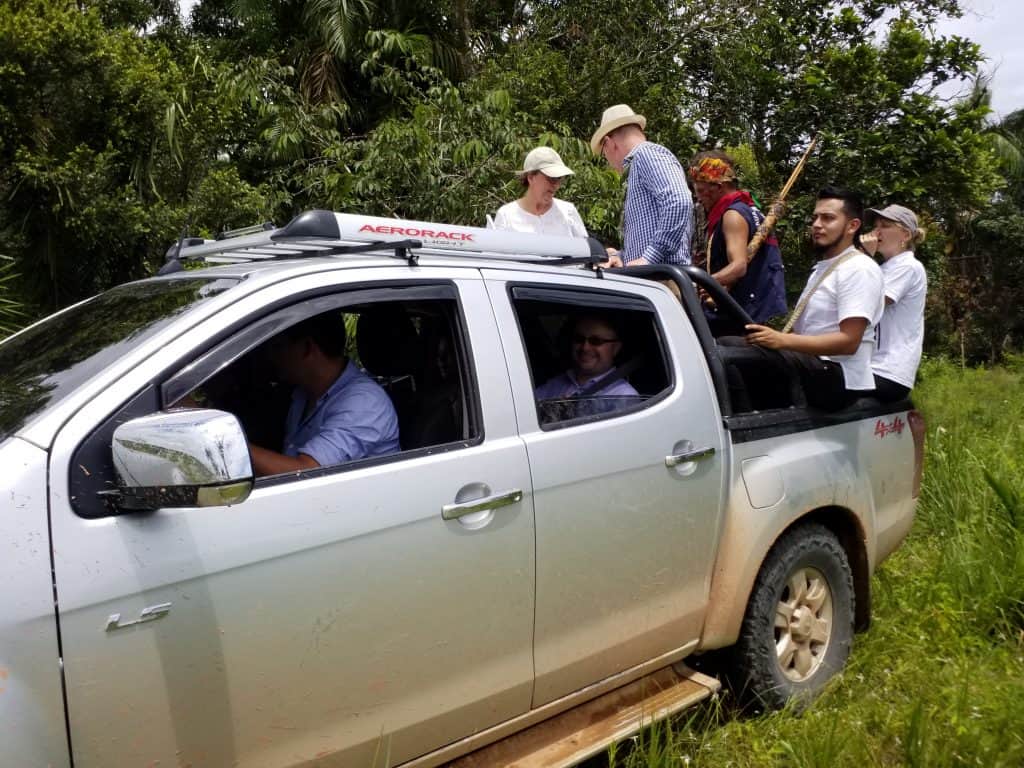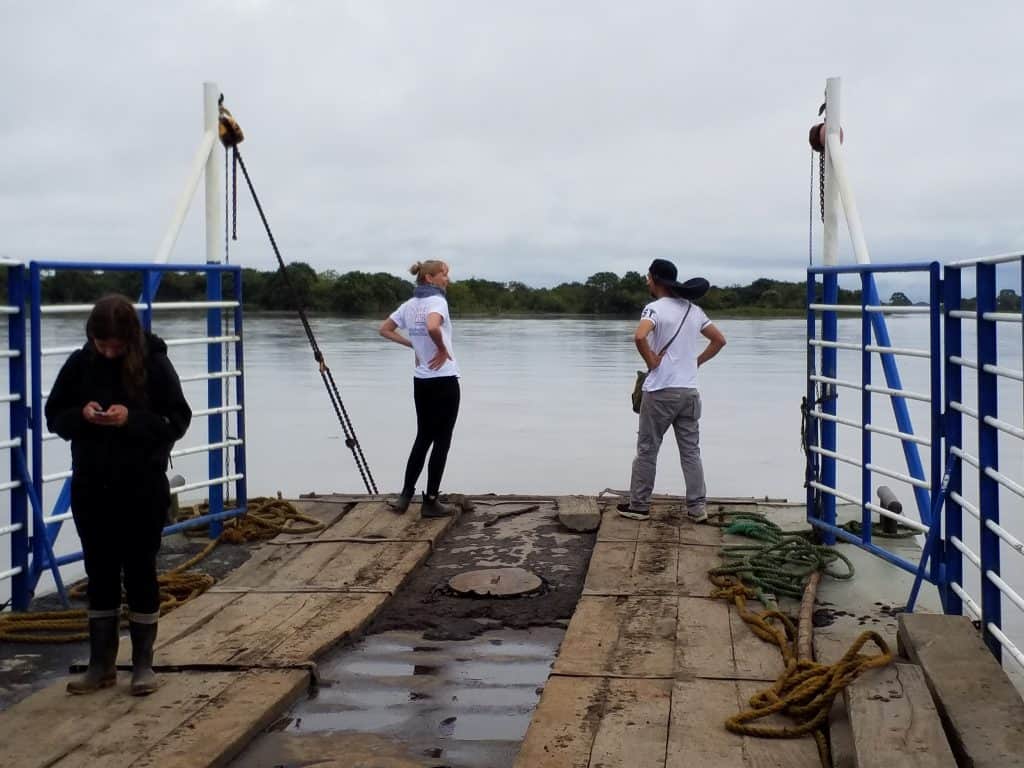In August 2018 British Parliamentarians visited Matarratón in an effort to understand the complex situation of land. They found that peasant farmer communities and Indigenous Peoples despite the Land Restitution Law (2011) and the Peace Accord (2016) were facing a dangerous struggle to get their land rights recognised by State Authorities.
The history of Matarratón is an example of the difficulties that peasant farmers and marginalised communities have in Colombia in order to have their land rights recognised. Under the guise of the conflict they have been forced off their land or land rightfully theirs has been registered as belonging to others. Frequently the Constitutional Court or the Land Restitution Court has ruled that this land belongs to them and they are still struggling to obtain the land title. Meanwhile those who are required to return the land, instead encourage others to come and settle . This enmeshes the historical inhabitants in a legal quagmire in relation to recognition of the rightful owners of the land.
Matarratón, El Porvenir
The peasant farmer community of Matarratón in El Porvenir arrived in the Altillanura (Meta) in the 1950s and 1960s, fleeing from political violence. They settled in the region opening a new agricultural frontier. After 5 years of working baldío land, these peasant farmers under Law 160 had the right to request a land title. Although Matarratón had applied for their land title, they experienced considerable resistance from INCORA (former state land registry), who subsequently issued this land title, illegally, to a large ranch owner.
Despite a Constitutional Court ruling in their favour they still had not managed to obtain the land tittle – something they explained in 2018 to a visiting Delegation of UK Parliamentarians.
What is baldio land? Article 64 in the Colombian Constitution directs the State to promote progressive access to land ownership for landless and poor agricultural workers, in order to improve income and quality of life in rural Colombia. In 1961 the Agrarian Reform Law, established that baldíos (state owned unoccupied land) could be only be awarded to individuals (not companies) and Law 160, established the amount of land considered necessary for a family to obtain a decent livelihood in Colombia and it is the maximum amount of baldio land allowed per family. This parcel of land is called the ‘Family Agriculture Unit’ (UAF). The State awarded parcels of land from ‘baldios’ to peasant farmers and landless agricultural labourers in order to address the issue of land concentration. Baldios were only for resource-poor farmers in Colombia.
History of Matarratón
The community of Matarratón had been working the land since the 1960s, however, despite their rights to this baldío land, unbeknown to them, a large ranch owner, Victor Machado, applied to INCORA and had in 1970, the 27,000 hectares where their farms were situated adjudicated to him. This was illegal under Law 160. The community continued to work the land unaware it had been adjudicated to Machado. However, when Machado died in 1979, his widow sold the 27,000 hectares to Víctor Carranza Niño, “the Emerald Czar”.

1980s: After the land titles of 27,000 hectares were transferred to Carranza, the communities noticed the presence of paramilitary groups in the region. These groups started harassing the population who had historically been living and working the land acquired by Carranza. A range of violent acts were directed at the farmers of Matarratón by
Carranza’s paramilitary group.
1986: The campesinos attempted to claim their land rights. The social leader filling the claim for recognition of their right to the land titles, was threatened and forced to leave El Porvenir. The officials of INCORA who received the application were allegedly “bought” and/or threatened by the Carranza family.
1987: 10 community members, key to the land claim, from El Porvenir were killed by Carranza’s paramilitaries. The whole village was threatened, and the majority displaced to Orocué (just acrross the river).

Carranza started putting up fences and dividing up the communities’ land. He started threatening people, telling them that he would kill them. The property was fenced, and the people were kicked out. This happened during the 1980s.
15 January 1992: Knowing that the land was originally baldío and that the community of Matarratón wanted to recover it, Victor Carranza divided up the property into smaller farms and had them adjudicated to 27 people, all of these people were in some way related to Carranza.
INCORA (subsequently INCODER) awarded land titles for the 27,000 hectares to these 27 people who had no historical relationship to the land and had never been part of the El Porvenir commuity. The land was divided into five large farms called “Mi Llanura”, “El Pedregal”, “El Rincón”, “Campo Hermoso”, and “Las Corocoras”. According to the local community these farms were worked and controlled by the family businesses of Victor Carranza (the “Ganadería La Cristalina”).
